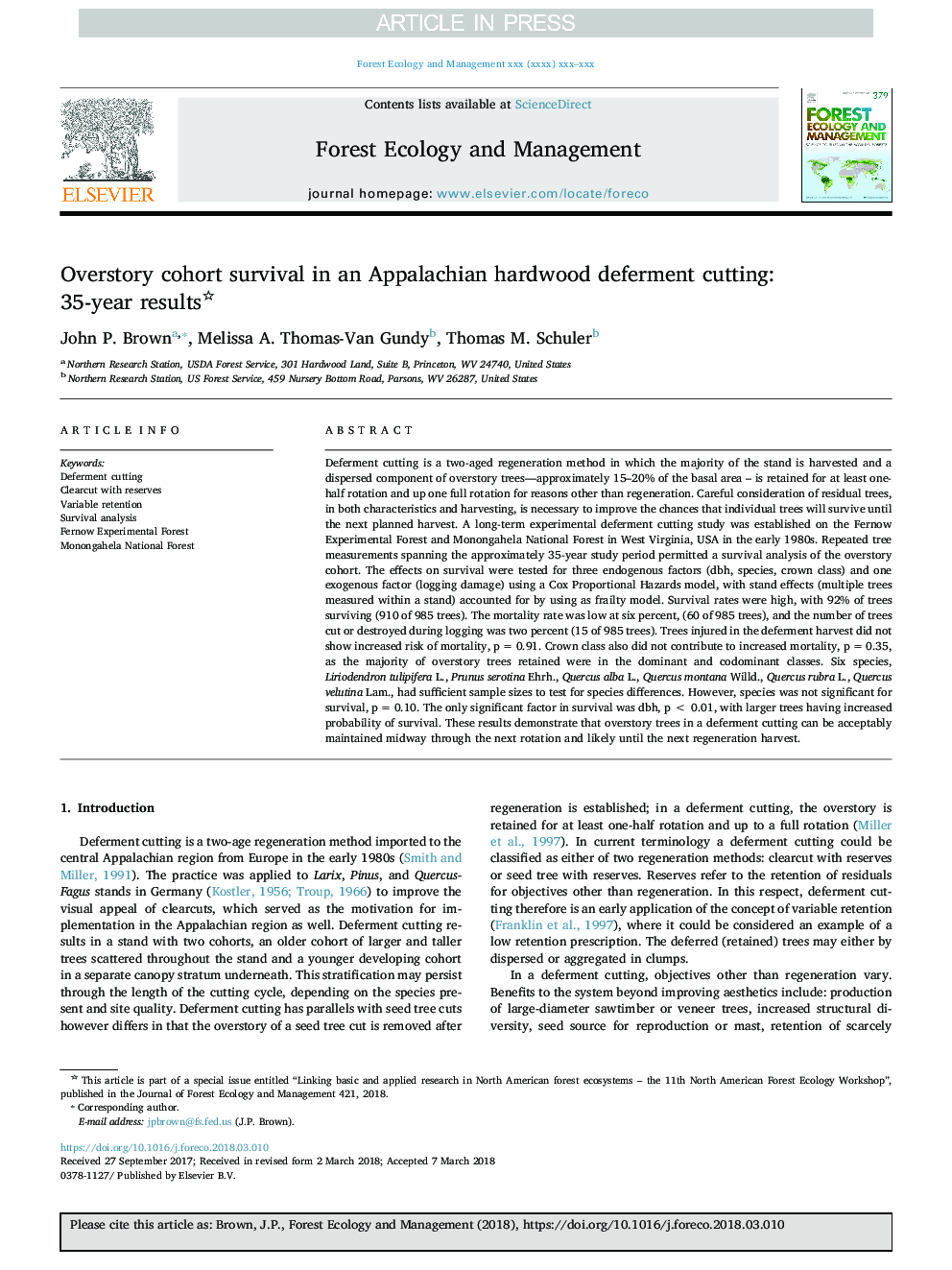| کد مقاله | کد نشریه | سال انتشار | مقاله انگلیسی | نسخه تمام متن |
|---|---|---|---|---|
| 6541688 | 1421339 | 2018 | 5 صفحه PDF | دانلود رایگان |
عنوان انگلیسی مقاله ISI
Overstory cohort survival in an Appalachian hardwood deferment cutting: 35-year results
ترجمه فارسی عنوان
بقای کوهورت بیش از حد در برش دهلیزی آپالاشی: نتایج 35 ساله
دانلود مقاله + سفارش ترجمه
دانلود مقاله ISI انگلیسی
رایگان برای ایرانیان
موضوعات مرتبط
علوم زیستی و بیوفناوری
علوم کشاورزی و بیولوژیک
بوم شناسی، تکامل، رفتار و سامانه شناسی
چکیده انگلیسی
Deferment cutting is a two-aged regeneration method in which the majority of the stand is harvested and a dispersed component of overstory trees-approximately 15-20% of the basal area - is retained for at least one-half rotation and up one full rotation for reasons other than regeneration. Careful consideration of residual trees, in both characteristics and harvesting, is necessary to improve the chances that individual trees will survive until the next planned harvest. A long-term experimental deferment cutting study was established on the Fernow Experimental Forest and Monongahela National Forest in West Virginia, USA in the early 1980s. Repeated tree measurements spanning the approximately 35-year study period permitted a survival analysis of the overstory cohort. The effects on survival were tested for three endogenous factors (dbh, species, crown class) and one exogenous factor (logging damage) using a Cox Proportional Hazards model, with stand effects (multiple trees measured within a stand) accounted for by using as frailty model. Survival rates were high, with 92% of trees surviving (910 of 985 trees). The mortality rate was low at six percent, (60 of 985 trees), and the number of trees cut or destroyed during logging was two percent (15 of 985 trees). Trees injured in the deferment harvest did not show increased risk of mortality, pâ¯=â¯0.91. Crown class also did not contribute to increased mortality, pâ¯=â¯0.35, as the majority of overstory trees retained were in the dominant and codominant classes. Six species, Liriodendron tulipifera L., Prunus serotina Ehrh., Quercus alba L., Quercus montana Willd., Quercus rubra L., Quercus velutina Lam., had sufficient sample sizes to test for species differences. However, species was not significant for survival, pâ¯=â¯0.10. The only significant factor in survival was dbh, pâ¯<â¯0.01, with larger trees having increased probability of survival. These results demonstrate that overstory trees in a deferment cutting can be acceptably maintained midway through the next rotation and likely until the next regeneration harvest.
ناشر
Database: Elsevier - ScienceDirect (ساینس دایرکت)
Journal: Forest Ecology and Management - Volume 421, 1 August 2018, Pages 54-58
Journal: Forest Ecology and Management - Volume 421, 1 August 2018, Pages 54-58
نویسندگان
John P. Brown, Melissa A. Thomas-Van Gundy, Thomas M. Schuler,
